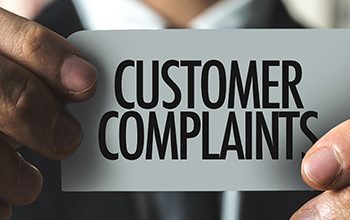
Intro by Skip Cohen
There’s so much great content in Shep Hyken’s blog archives. Setting the highest possible standard for Customer Service is your not-so-secret weapon to give you a leadership reputation in your community.
I grew up in Customer Service in Polaroid back in the 70s. The SX-70 had come out and those first 10,000 units were rumored to be 300% defective. Fortunately for Polaroid there was no Internet, but we did have a toll-free 800 line which back then was a big deal.
Customers were obviously upset, spending $300 on an instant camera and not getting the anticipated results. Even as the camera quality issued improved, the fact that you saw the results instantly put us at a disadvantage. They’d compare the actual scene to the photograph and then tell us their Kodak prints look better than ours.
Early on we were taught to empathize and done right, it almost always diffused the situation. In later years at Hasselblad, while it wasn’t very often, my favorite line was, “I can’t blame you for being upset. Let’s see what we can do to fix the problem. The buck stops here.”
No matter how good you are, sooner or later you’re going to be dealing with a frustrated upset client. Just remember you’ve got two ears and one mouth – so listen twice as much as you talk.
I was recently interviewed by Mario Martinez on his Modern Selling podcast. He shared a story about how he emailed the CEO of a company, and in an incredibly short amount of time, his phone rang, and you can guess who it was … the CEO.
In a state of shock, instead of launching into the reason for the complaint email, my friend asked him, “How are you?”
The CEO said, “I’m not well. That’s because you’re not well.” He was referring to the complaint and how my friend wasn’t happy with his company’s product.
That made me start thinking about the best ways to begin a conversation with a complaining or upset customer. Of course, there may be a few pleasantries to welcome a customer into the conversation. Then, what is said next is what’s important. So, here are a few lines that customers love to hear. They show concern, empathy, and create a sense of confidence. Done right, they help renew the customer’s desire to continue the business relationship.
- “Sorry!” Of course, any sentence that starts with a genuine apology is a good way to respond to the complaining customer. There are many ways to say, “I’m sorry.”
- “I can understand why you’re upset. I would be too if that happened to me.” This is a great empathy statement. It’s a way of saying, “You’re right,” and it shows you are relating to the customer.
- “I’m glad you called. My name is ____ (fill in the blank), and I’m here to take care of you.” This indicates some level of ownership.
- “We need to do something about this right away.” This creates a sense of immediacy. If there is a way to resolve the issue in that call, you’re on your way to complaint resolution success. At a minimum, discuss the timing of the resolution.
- “Let’s work through this together.” This statement makes a connection with the customer. They become a contributor to the solution. The customer may even feel as if “they have a friend on the inside.”
If any promises or commitments are made, such as, “You should hear back from us by the end of the day,” be sure to follow through. Otherwise, all of the efforts will have gone to waste. And, once the conversation is coming to a close, don’t forget to say, “Thank you.” What started as a Moment of Misery for the customer is ending as a Moment of Magic®. Be sure customers know how much you appreciate their business, and how you look forward to serving them again.
Copyright © MMXXI, Shep Hyken – Used with Permission





























